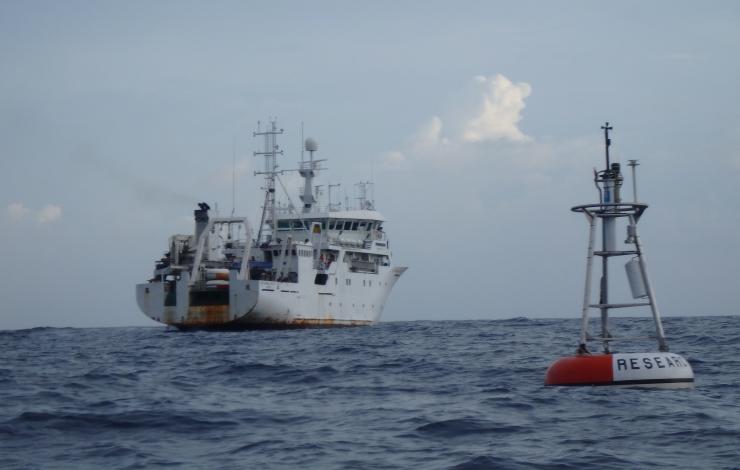PMEL’s Global Tropical Moored Buoy Array group has begun the 2017 field season of the Research Moored Array for African-Asian-Australian Monsoon Analysis and Prediction (RAMA) in the Indian Ocean.
PMEL scientists and engineers just finished participating in the collaborative US-Indonesian research cruise aboard the Indonesian research vessel Baruna Jaya VIII in support of the RAMA array. Dr. Michael McPhaden, Tim Nesseth, and William Higley (from the University of Washington’s Joint Institute for the Study of the Ocean and Atmosphere) serviced 5 RAMA moorings along 90°E. The cruise left Jakarta on February 20 and returned to Jakarta on March 16 with a mid-cruise port call in Sabang on northern Sumatra. During the mid-cruise port stop in Mike McPhaden briefed local and regional officials from the Indonesian Agency for Meteorology, Climatology, and Geophysics (BMKG), which partners with NOAA in maintaining RAMA buoys in the eastern Indian Ocean.
RAMA is an international effort to improve understanding and ability to predict of the African-Asian-Australian monsoon system. It complements other moored arrays in the Atlantic (PIRATA) and Pacific (TAO/TRITON) Oceans. Since RAMA began in 2004, the array has since grown through the formation of new partnerships and is now 78% complete. To learn more about RAMA, visit PMEL’s Global Tropical Moored Buoy Array’s website here.



